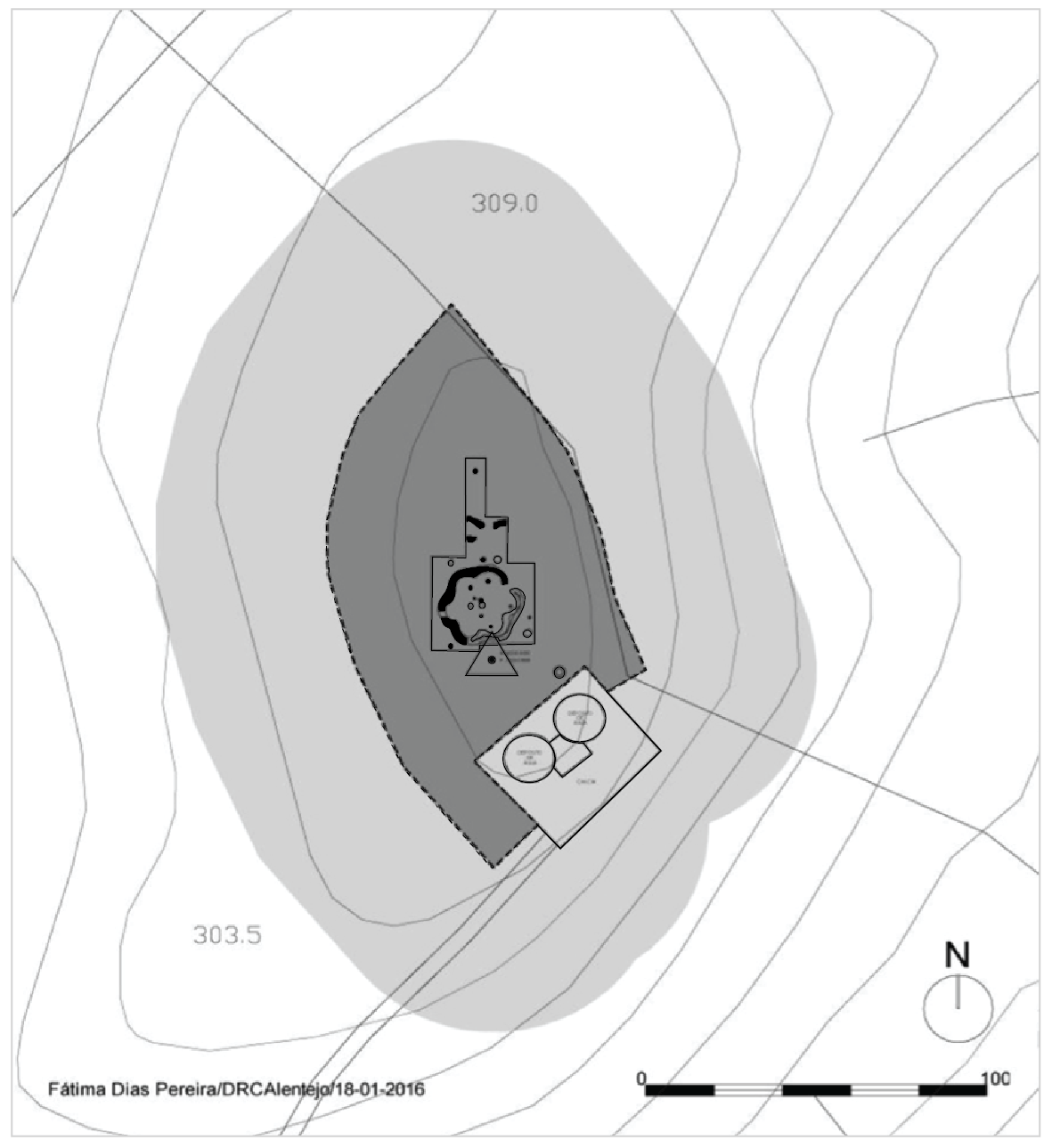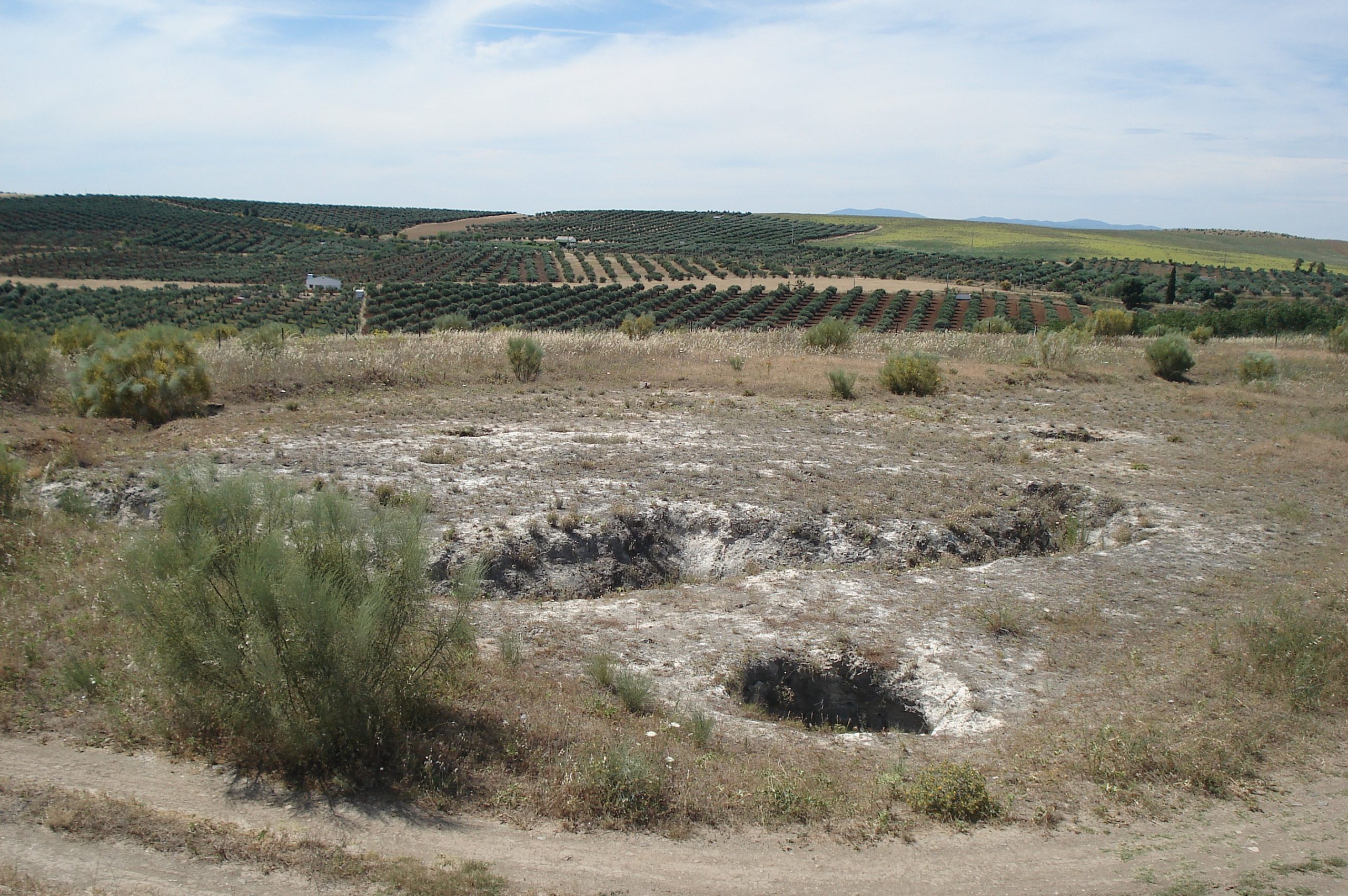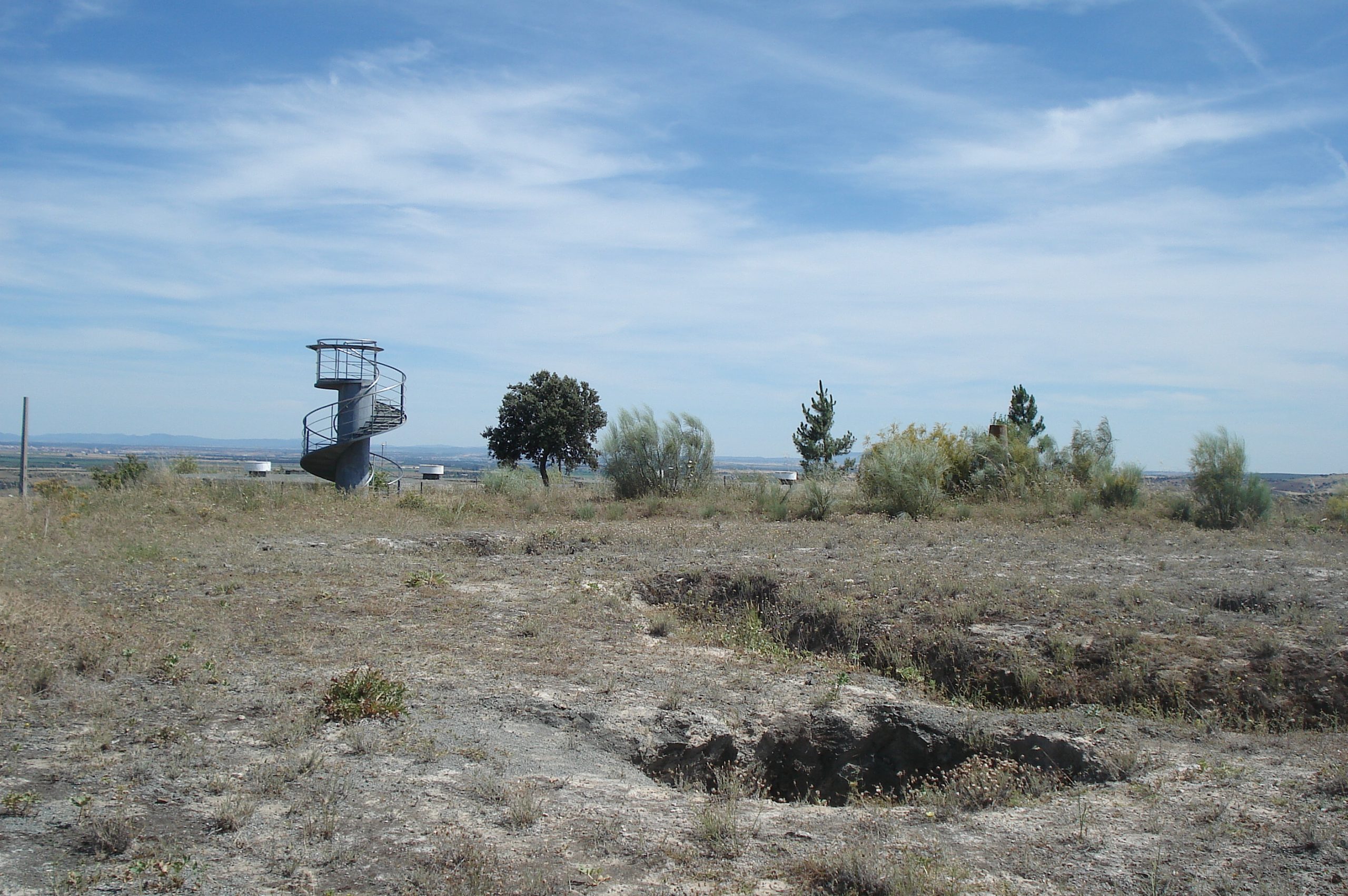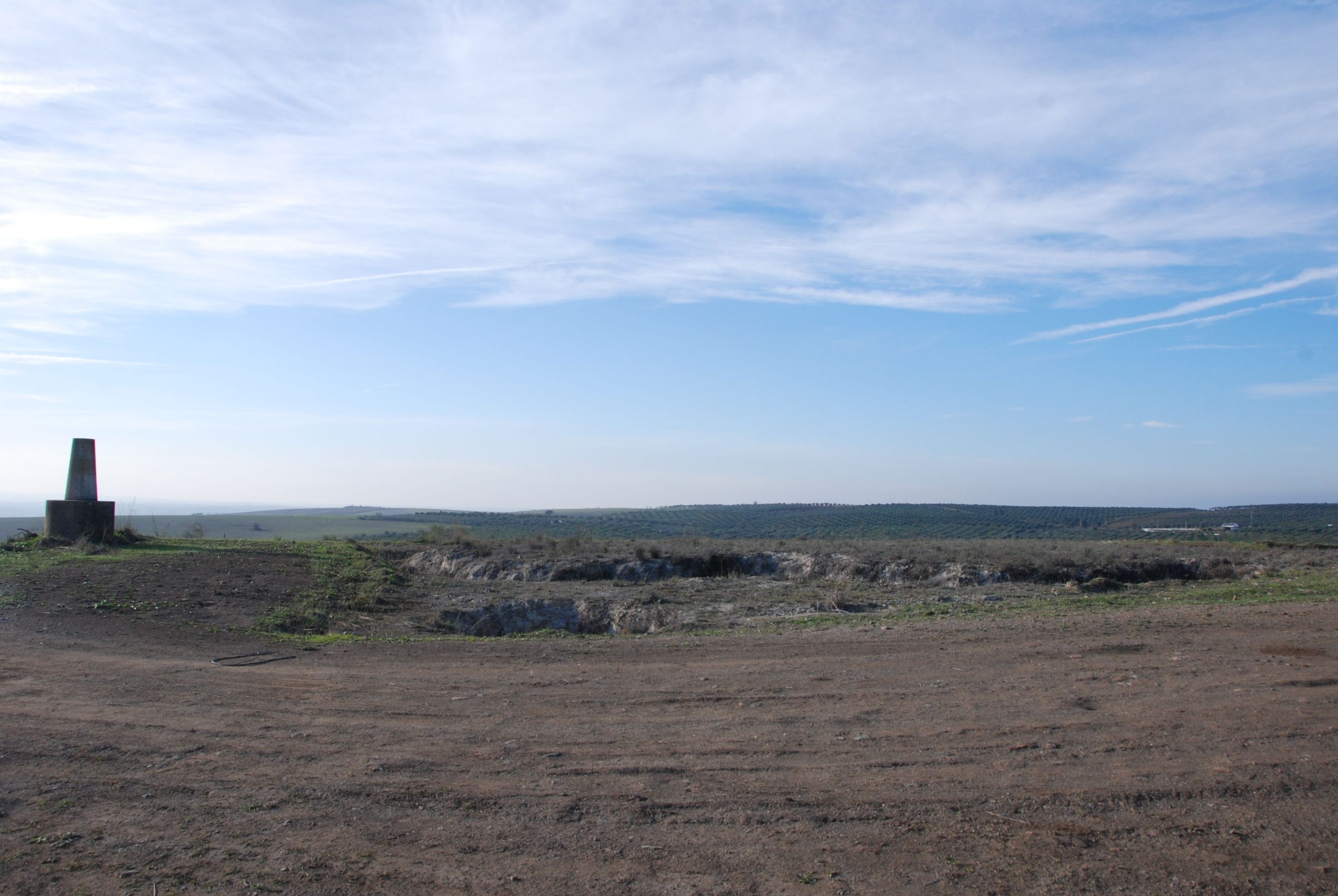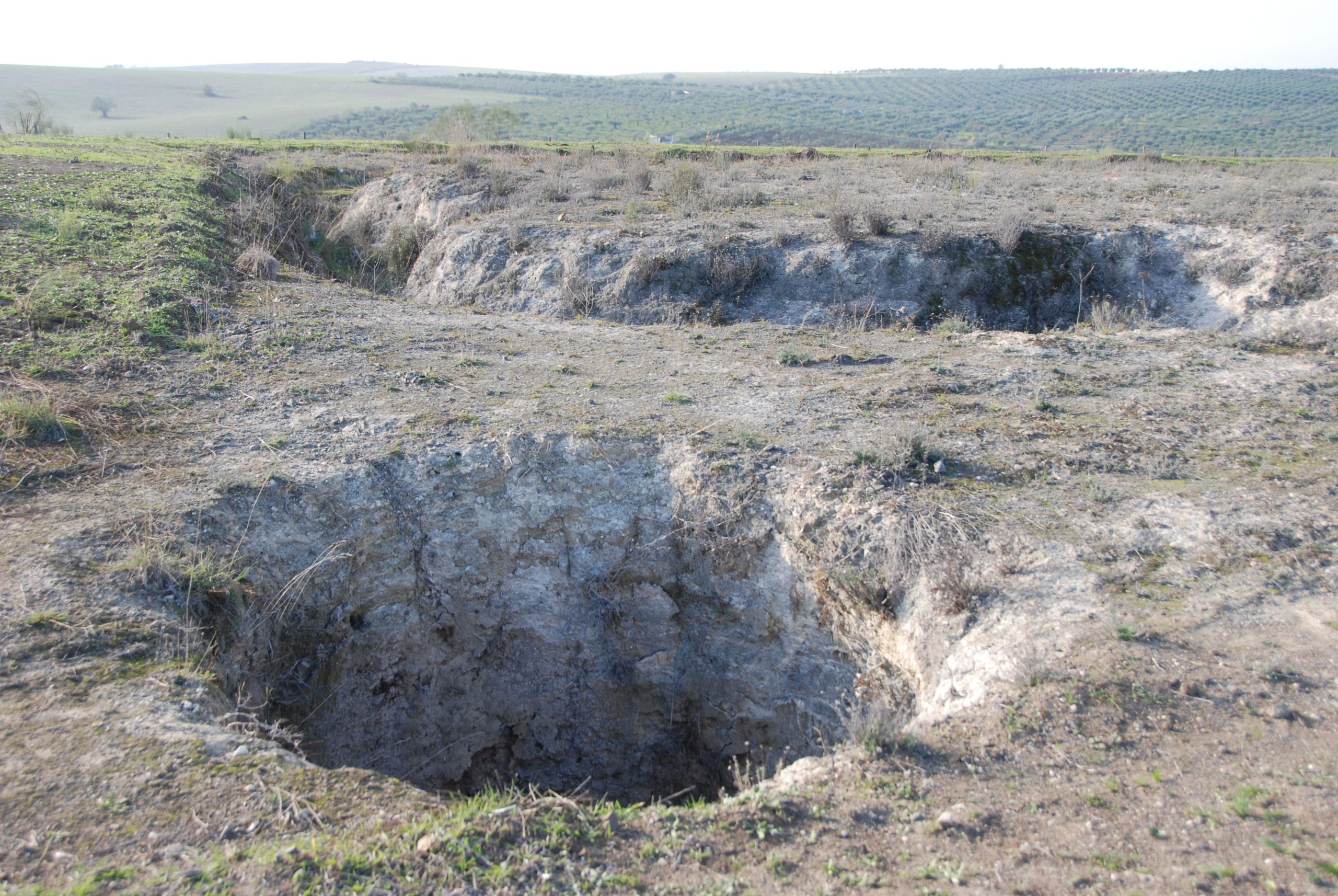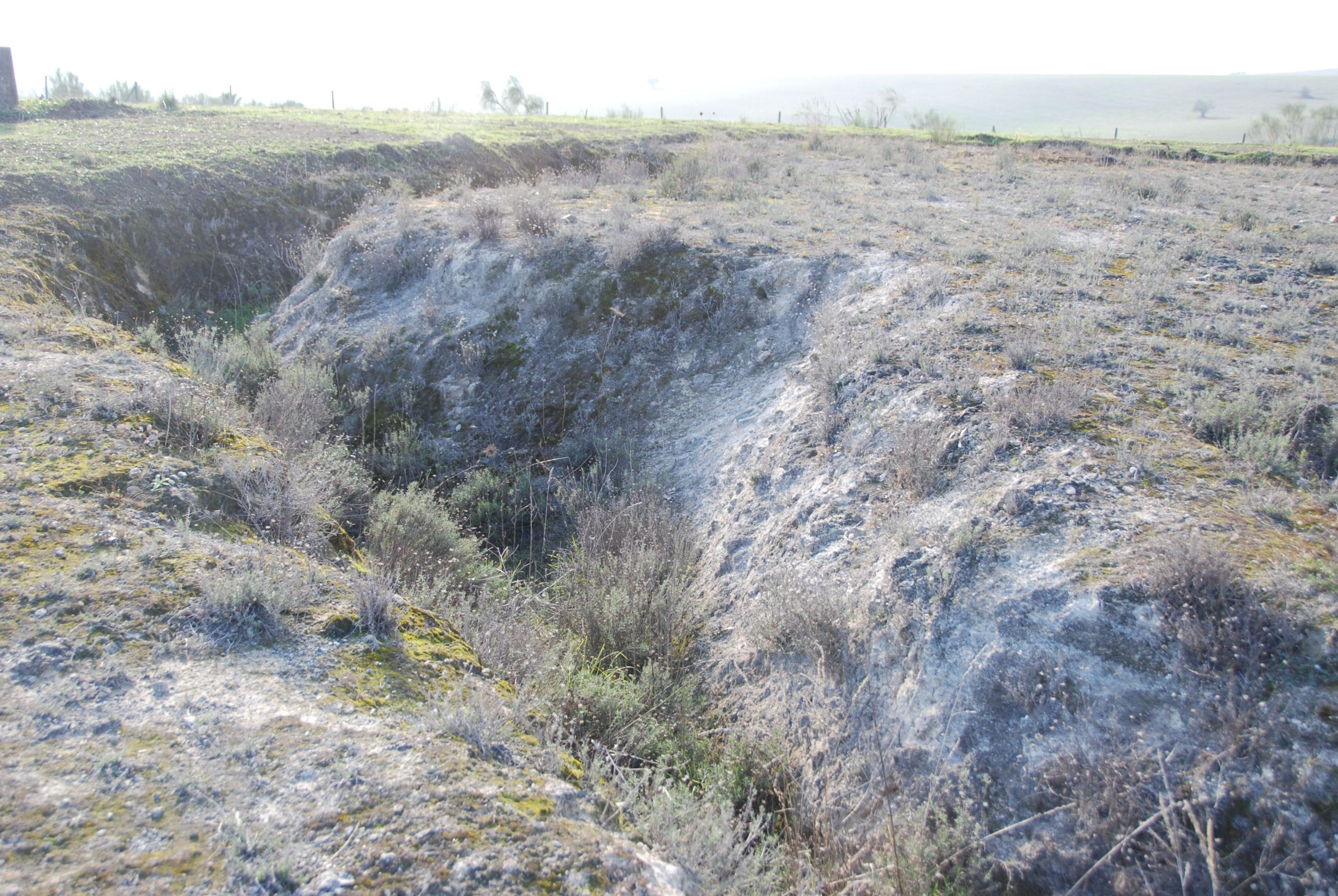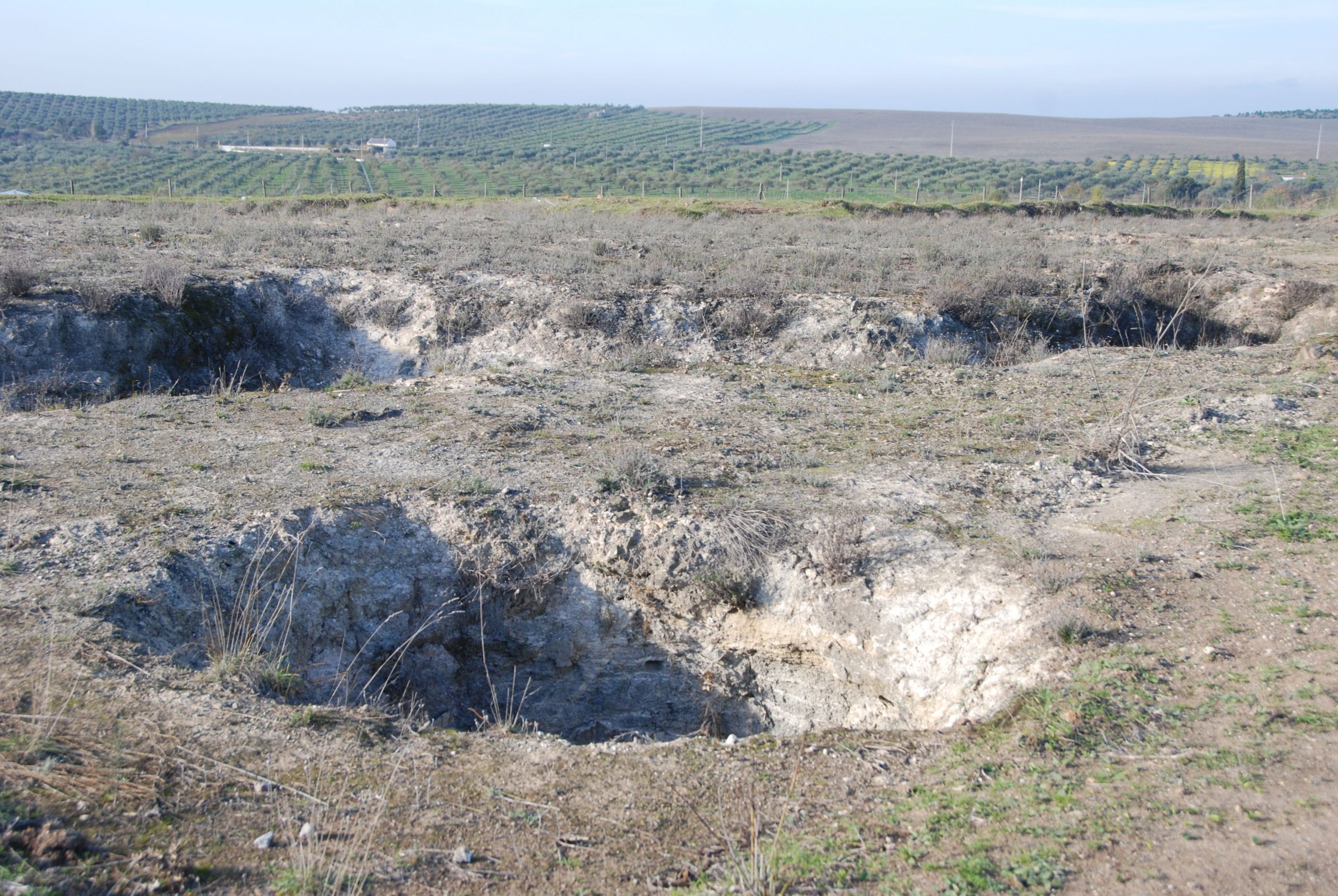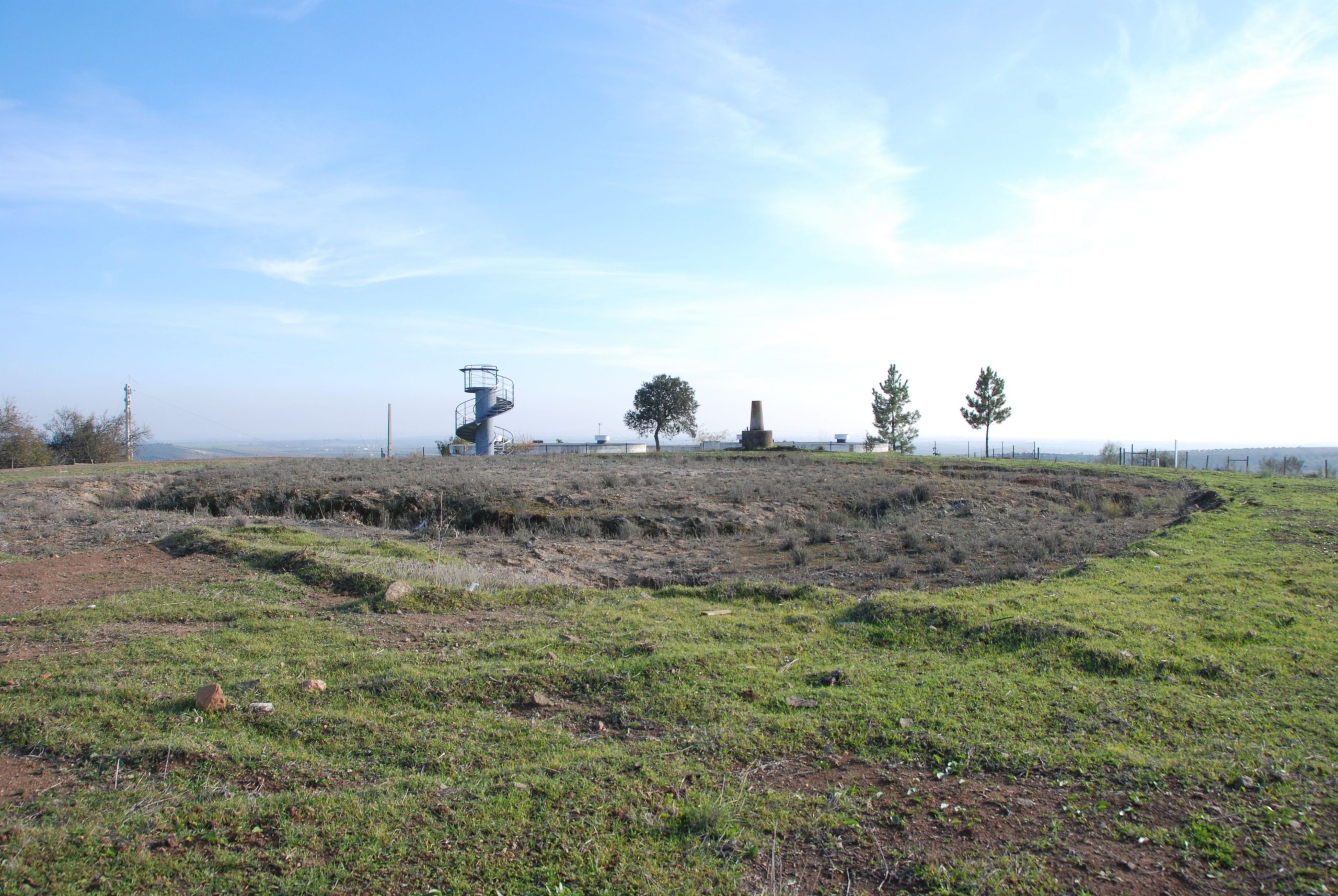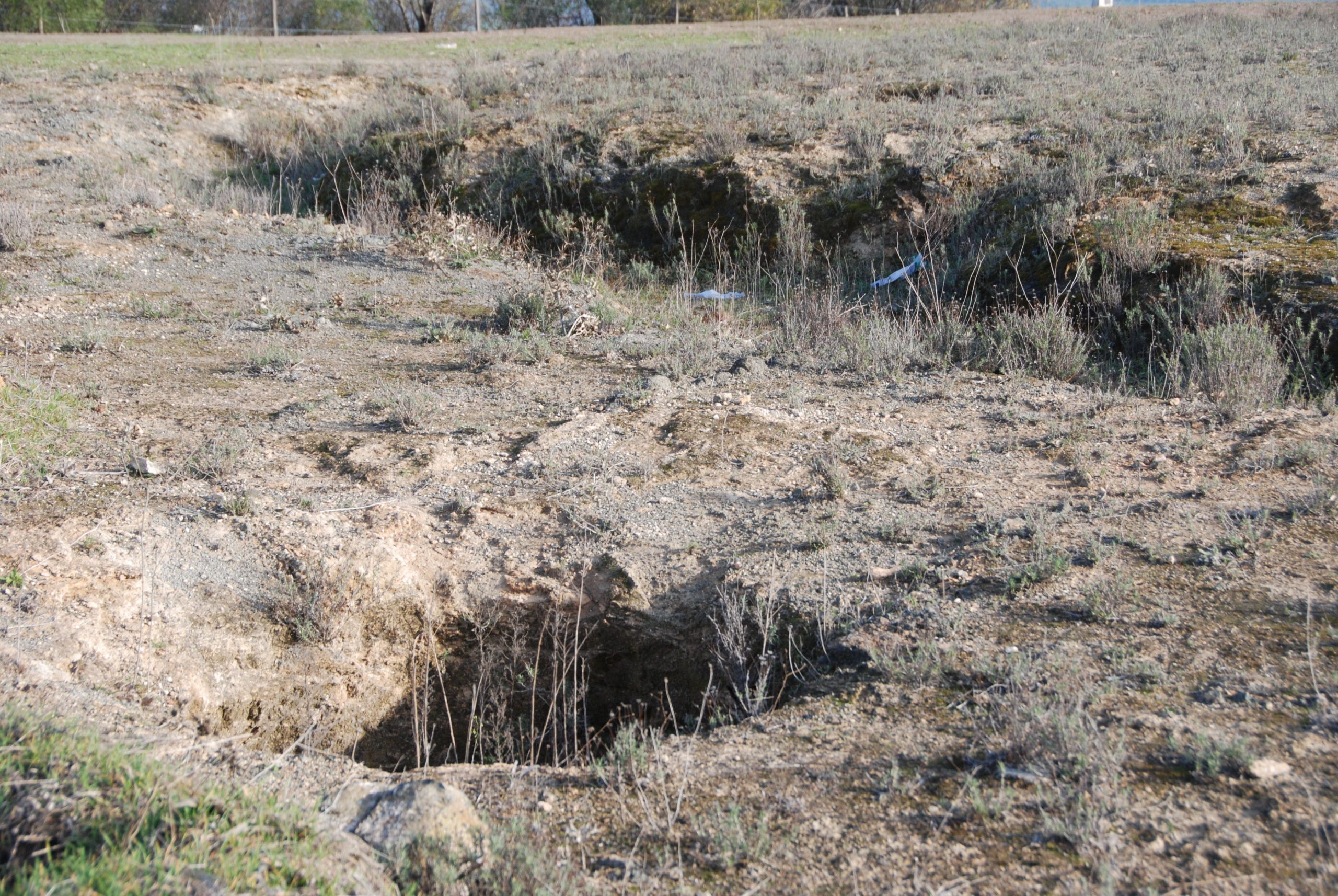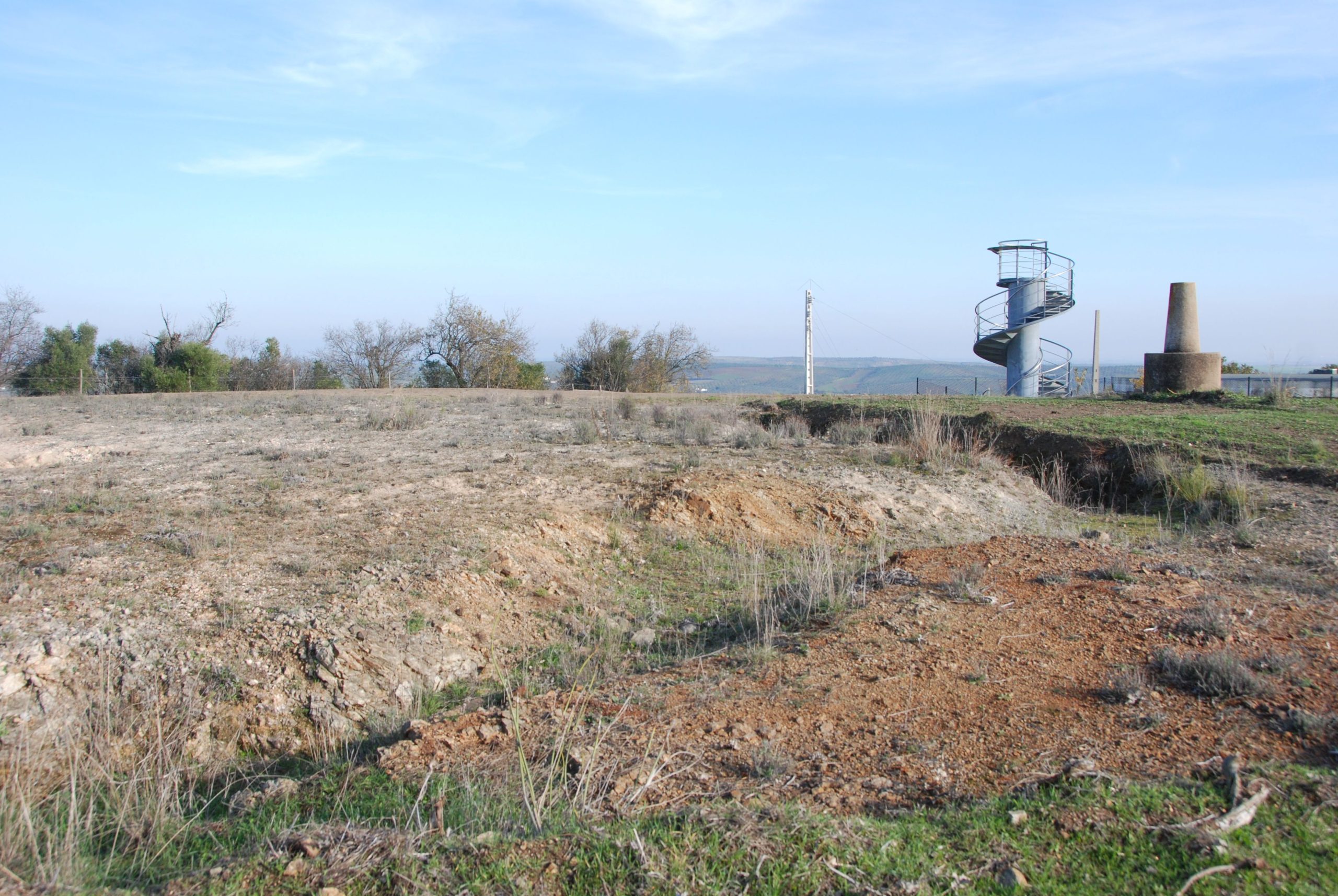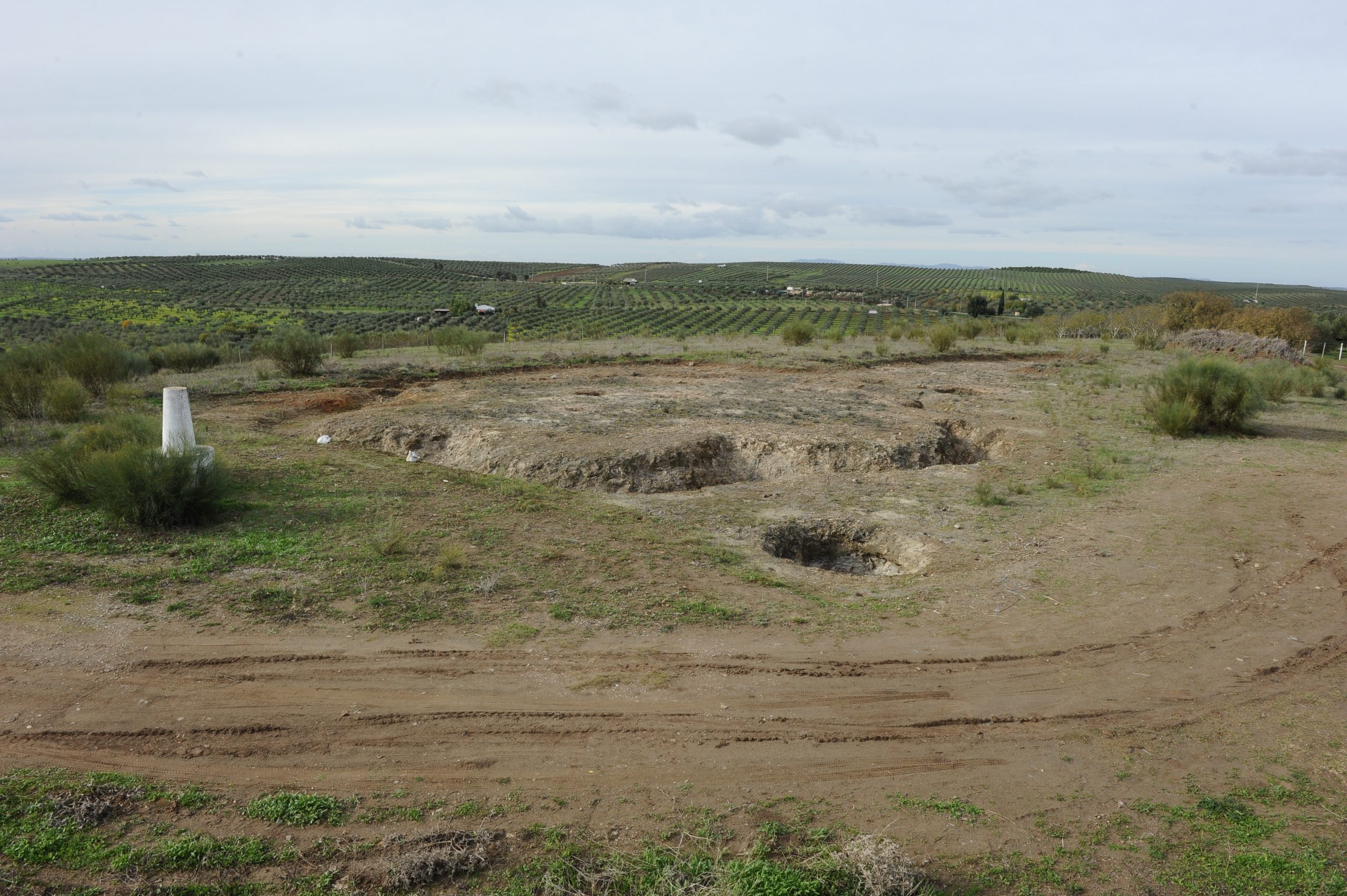Campo Maior
Prehistorical Settlement of Santa Vitória
About
Prehistorical Settlement of Santa Vitória
The Prehistorical Settlement of Santa Vitória, whose human occupation is attributed to the first half of the 3rd millennium B.C. (3,000-2,500 B.C. – Chalcolithic), is located 312 meters high, almost 3 km to the Southeast of the town of Campo Maior and was discovered in 1986.
Archaeological excavations concluded that this site had two different phases of human occupation.
Two lines dug in the rock stratum correspond to the first phase (the eldest), forming a compound/moat settlement. One has a curved shape (semi-circles or regular lobes). These two moats, which outline the site, were used to create an adobe defence system reinforced with a palisade. We also suspect a third defensive line may have existed.
In addition to this defensive system, also dated from the first phase, we find several negative structures with different functions: granaries, cisterns, and residential areas (postholes). Complemented by the large ceramic recipients, granaries have shown this community's need to store food; they also practised weaving (loom weights) and produced cheese (cheese moulds).
During the second occupation phase, the moat compound was filled with dirt and disappeared. Some circular plan huts, built on stone foundations, and several combustion structures and new pits/granaries appeared.
Access
Prepare your visit
It is possible to walk up to the fence surrounding the site. There are no guided tours to the site, and children must always be accompanied by a responsible adult.
For more information, contact the Campo Maior Tourism Office (268 680 319).
Reduced mobility
The Prehistorical Settlement of Santa Vitória is partially accessible to people with reduced mobility (wheelchairs, baby strollers).
Support

RESEARCH
Bibliography & useful links
DIAS, Ana Carvalho (2001). Povoado Pré-Histórico de Santa Vitória (Campo Maior). In Património / Estudos, n.º 1, Instituto Português do Património Arquitectónico, Lisboa, pp. 73-75.
RAPOSO, Jorge (2001). Sítios arqueológicos visitáveis em Portugal. In Almadan. 2ª série: 10, Almada, pp. 100-157. Disponível em: Consultar Artigo Completo → [Consultado a 22 de março de 2023].
VALERA, António Carlos (2012). Fossos sinuosos na Pré-História Recente do Sul de Portugal: ensaio de análise crítica. In Actas do V Encontro de Arqueologia do Sudoeste Peninsular, Almodôvar, 18 a 20 de Novembro de 2010. Câmara Municipal de Almodôvar, pp. 25-38. Disponível em: Consultar Artigo Completo → [Consultado a 23 de março de 2023].
VALERA, António Carlos (2013a). Cronologia dos recintos de fossos da Pré-História Recente em território português. in ARNAUD, José Morais; MARTINS, Andrea; NEVES, César, coord., Arqueologia em Portugal. 150 Anos. Associação dos Arqueólogos Portugueses, Lisboa, pp. 335-343. Disponível em: Consultar Artigo Completo → [Consultado a 23 de março de 2023].
VALERA, António Carlos (2013b) – Recintos de Fossos da Pré-História Recente em Portugal. Investigação, discursos, salvaguarda e divulgação. In Almadan, 2ª série: 18, Almada, pp. 93-110. Disponível em: Consultar Artigo Completo → [Consultado a 23 de março de 2023].
VALERA, António Carlos; BASÍLIO, Ana Catarina; ALMEIDA, Nelson (2021). O Recinto de Fossos de Santa Vitória (Campo Maior): Trabalhos de 2019 e 2020 (Projecto SANVIT). In Apontamentos de Arqueologia e Património, nº 15, pp. 9-27. Disponível em: Consultar Artigo Completo → [Consultado a 23 de março de 2023].
VALERA, António Carlos; BASÍLIO, Ana Catarina (Eds., 2023). Santa Vitória (Campo Maior, Portalegre). O “primeiro” recinto de fossos. In Era Monográfica 7, Núcleo de Investigação Arqueológica – NIA, Era Arqueologia S.A., Dafundo. Disponível em: Consultar Artigo Completo → [Consultado a 25/09/2023].
https://www.patrimoniocultural.gov.pt/pt/patrimonio/itinerarios/alentejo-algarve/06/
http://www.monumentos.gov.pt/Site/APP_PagesUser/SIPA.aspx?id=28388
https://arqueologia.patrimoniocultural.pt/index.php?sid=sitios&subsid=49407
https://campomaior.pt/povoado-pre-historico/
https://www.visitarportugal.pt/portalegre/campo-maior/campo-maior/povoado-prehistorico-santa-vitoria
